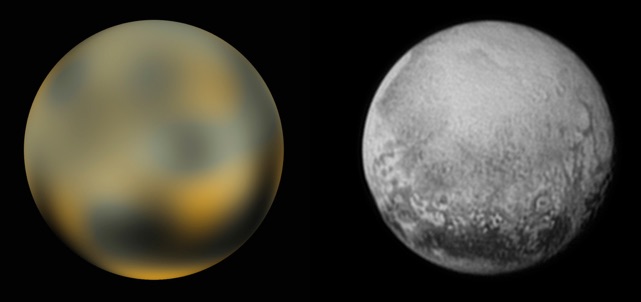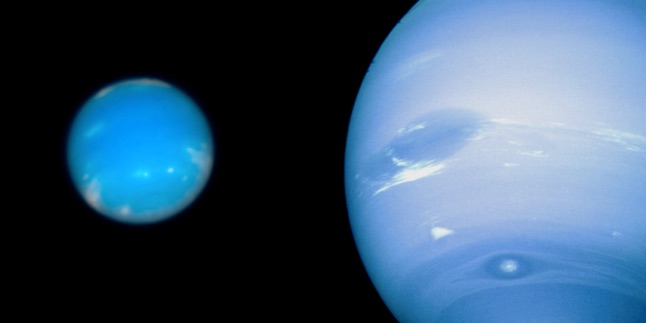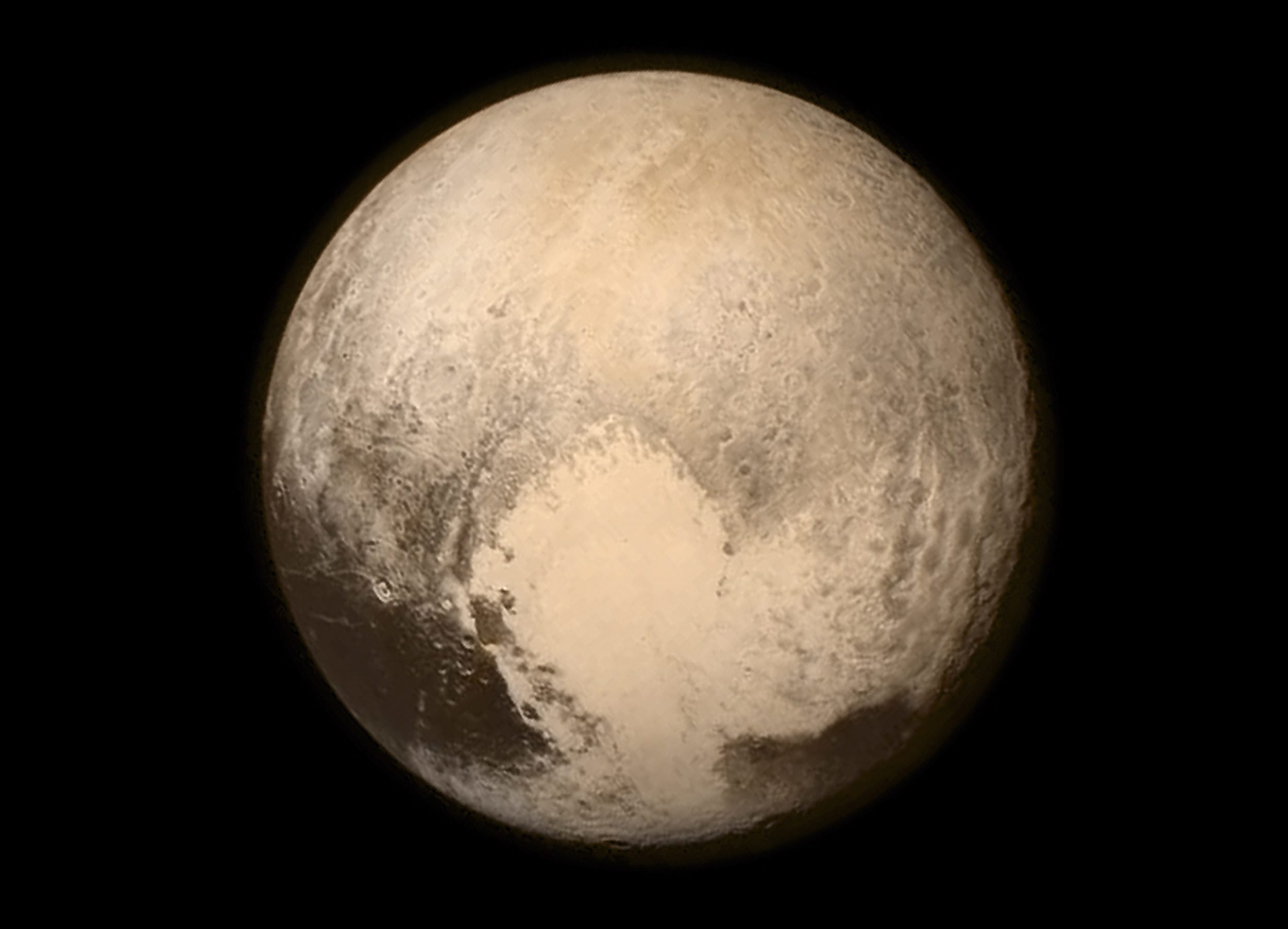Physicist: In 2006 a probe called New Horizons was launched to get a better look at Pluto and its moons Charon, Nix, and Hydra. Since then, Pluto stopped being a planet and gained a couple more moons: Kerberos and Styx.
This is exciting stuff. The reason we have big fancy pictures of the eight planets in our solar system is because we’ve sent cameras to them. Hubble (and future space telescopes) are great, but sometimes you’ve just gotta be there.
Tomorrow morning (July 14, 2015) New Horizons will pass Pluto at mach 48 (48 times the speed of sound, which is a misleading and entirely inappropriate way of measuring speed in space). It will furiously take pictures and measurements for a couple hours and then continue into interstellar space, where its docket will be pretty open for the next few million years.
Already New Horizons has sent us the clearest images of Pluto ever.

Pluto as seen by Hubble (left) and as seen by New Horizons, two days and few million miles ago (right).
Unlike the last post in this vein, there’s nothing for you to personally do. But still: now we get to learn stuff about the planet-turned-dwarf-planet that’s been a bit of an asterisk for 85 years. Good times!
Update (July 15, 2015): Huzzah!









Along these lines.
I believe Voyager 1 and 2 have left the Solar System?
Any data coming from them useful for SOL +/- velocity evaluation relative to
SRT or GRT?
George
Thanks so much for posting!
Why did the vessel continue out of the solar system, rather than putting it in orbit around Pluto? I mean obviously it would need a propulsion system, but I do wonder why we aren’t building satellites designed to be put into orbit around other planets, rather than just letting them go wherever physics takes them after they’ve been used.
@CarefreeMathematician I asked a friend that question on your behalf and he pointed me here:
http://io9.com/heres-why-the-new-horizons-spacecraft-wont-be-stopping-1710069685
Ok, that “friend” was Google 🙂
I have a question about the shear speed of the probe. If I was somehow floating around in space and New Horizons flew straight passed me, would I actually notice? I mean, there’s no sound, no turbulence and just 1 second beforehand it was 14km away! This means it entirely relies on my vision and brain speed since in just 1 second it would have gone from looking like a small dot in space, to disappearing out of view over my shoulder…
Answer this one regarding the so-called velocity increase from whipping around Jupiter.
The velocity increase is due to Jupiter’s mass. There is a change in direction. However, after leaving Jupiter’s area, the probe should be decelerated by Jupiter’s mass to the same extent as the increase before.
Isn’t the real action a decrease in time to get to Pluto because of a better trajectory?
Velocity increase towards Jupiter should equal velocity decrease as it moves away.
G
@George D Conger
From Jupiter’s point of view you’re exactly right: the speed of the probe starts and ends the same. However, if Jupiter is moving, then the situation changes. There’s a post here that goes into detail.
“Does a human have enough energy to jump into orbit around Pluto?”
This question was asked on one of the “Fun Faqs” taken from NASA’s New Horizon Mission (http://pluto.jhuapl.edu/Mission/FAQs.php).
Given Answer:
No. To escape Charon’s gravity you need to get up a lot of speed. The escape velocity from Charon is near 1,351 miles per hour (610 meters per second). Not even the fastest runner or the strongest person could reach those speeds on Charon.
However…
Given a smooth equatorial path, one just might be able to pedal the new NASA economy exploration buggy (many-geared “mountain” bicycle) up to escape velocity. Since the Plutonian atmosphere is given at most, .000001 “of the surface pressure of the Earth’s atmosphere”, the atmospheric drag would be incredibly low. Also one’s weight would be just 7% of that on earth, making the human powered assembly easier to pedal in dirt. In addition, the initial “rest” weight would continue to further decrease as higher surface speed approached said escape velocity. The limiting 100% speed factor might finally be lack of traction as weight-on-driver(tire) dwindled to zilch.
So I recommend one remove the shock absorbers, but keep the springs. Pre-tie the springs in a high compression position and, when one is at 99.999% or so escape velocity, suddenly cut the string, releasing the springs for that final sproing jump. Voila!
Gotta do what you can to get to the orbiting transport ship when the landing module fails, right? Ok, even it it wouldn’t quite work, it was fun planning anyway. Really… I’ve seen similar fantastic engineering on Nat’l Geographic channel’s Secret Space Escapes. Those astronauts have nerves of graphite.
Whoops. A correction to the above.
For the Pluto question, NASA somehow suggested the escape velocity for Charon ( 1,351 mph), a satellite of Pluto’s. I calculate the escape velocity for Pluto itself as actually about 2,711 mph. No problem. Of course, I’m not doing the pedaling.
We might someday land on Charon anyway, since it is also a better re-launch point to deep space in my opinion.